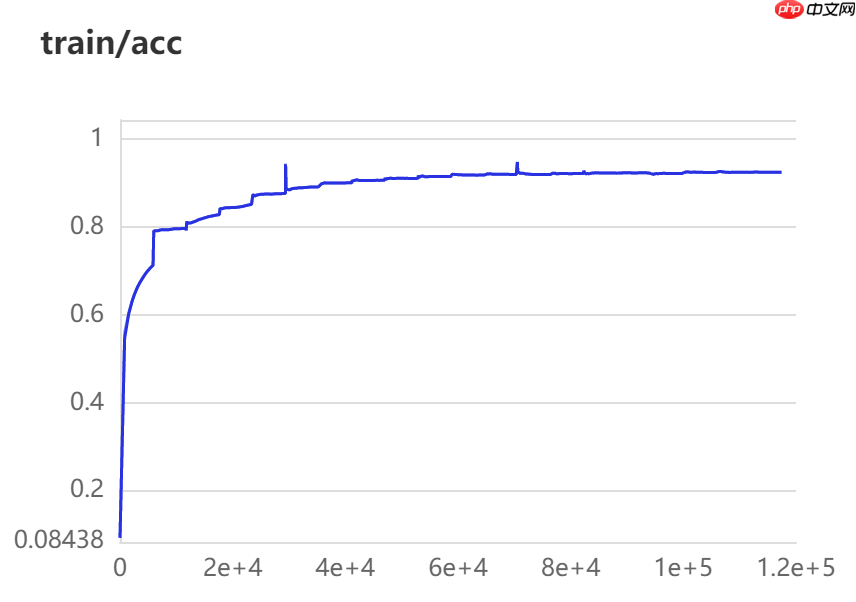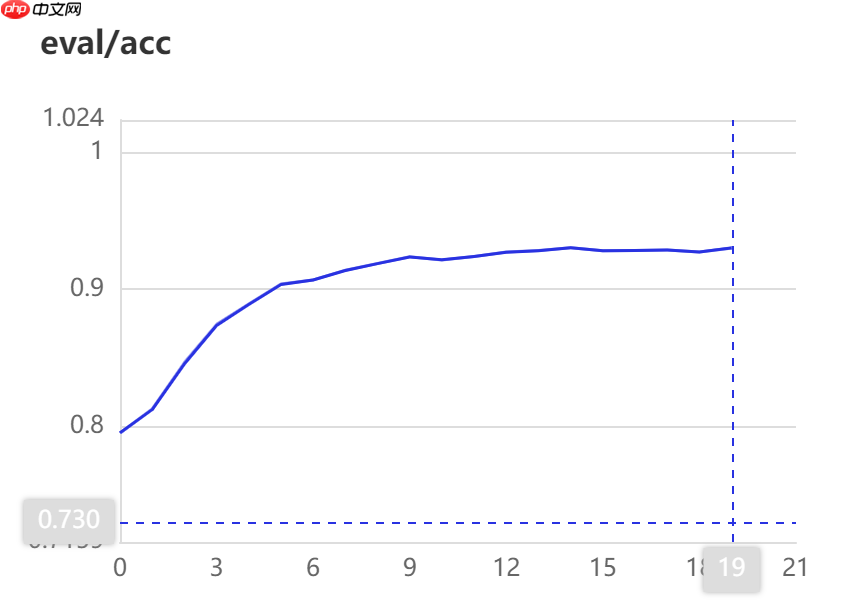该项目针对中文新闻文本标题分类任务,采用embedding+GRU+MLP模型,精度约0.8。先预处理数据,用Jieba分词,构建语料库和词向量映射,依标题长度分布设最大输入长度20。再搭建网络,训练时验证精度超0.9但测试精度较低,存在过拟合,可尝试BERT提升精度,适合新手参考。
☞☞☞AI 智能聊天, 问答助手, AI 智能搜索, 免费无限量使用 DeepSeek R1 模型☜☜☜

该项目是我在针对 AI studio 常规赛:中文新闻文本标题分类搭建的项目,目前精度在0.8左右。只简单的使用了embedding+GRU+MLP,但是项目是从头开始搭建的,并没有使用一些复杂的模型,并且项目带有很多解释说明,所以可供新手朋友参考。
(复杂的模型比如BERT,如果想提高精度,可以尝试使用该模型,模型的具体细节可以参考《BERT: Pre-training of Deep Bidirectional Transformers for Language Understanding》)
在看到这个项目之后,首先明确这是个分类任务,类似于手写数字识别这种,因此我们可以参照手写数字识别的思路处理该问题。
首先,对数据集进行预处理(包括去换行符,将标题与类别分离,创建项目语料库等等),然后将我们的输入进行向量化。在向量化过程中,我们使用了Python一个很正要的库:Jieba库。 它是优秀的中文分词第三方库,可以参考Jieba使用说明。然后使用Paddle框的数据集构建方法进行构建我们网络的输入。
然后,我们构建网络模型。对于手写数字识别网络,我们仅仅使用几层简单的全连接网络构建一个MLP多层感知机就可以获得比较好的结果,我们首先进行了这种尝试,结果不是很理想。然后鉴于这个是文本处理任务,我们使用了一个简单的循环神经网络(GRU,门控循环单元)和嵌入层来进行实验,在训练的时候取得不错的结果(val 精度超过0.9),但是在提交之后效果并不是很好(test精度在0.8左右),说明我们的模型存在过拟合,还可以进一步优化。
import paddleimport numpy as npimport jiebaimport matplotlib.pyplot as pltfrom tqdm import tqdm
/opt/conda/envs/python35-paddle120-env/lib/python3.7/site-packages/matplotlib/__init__.py:107: DeprecationWarning: Using or importing the ABCs from 'collections' instead of from 'collections.abc' is deprecated, and in 3.8 it will stop working from collections import MutableMapping /opt/conda/envs/python35-paddle120-env/lib/python3.7/site-packages/matplotlib/rcsetup.py:20: DeprecationWarning: Using or importing the ABCs from 'collections' instead of from 'collections.abc' is deprecated, and in 3.8 it will stop working from collections import Iterable, Mapping /opt/conda/envs/python35-paddle120-env/lib/python3.7/site-packages/matplotlib/colors.py:53: DeprecationWarning: Using or importing the ABCs from 'collections' instead of from 'collections.abc' is deprecated, and in 3.8 it will stop working from collections import Sized
train_data_path="data/data118554/train.txt"val_data_path='data/data118554/dev.txt'test_data_path='data/data118554/test.txt'
def openfile(path):
with open(path,'r',encoding='utf-8') as source:
lines=source.readlines() return linestrain_lines=openfile(train_data_path) val_lines=openfile(val_data_path) test_lines=openfile(test_data_path)
每条数据集是由 “新闻标题文本+类别(标签)”构成,中间由空格隔开。
print(len(train_lines))print(train_lines[0])print(len(val_lines))print(val_lines[0])print(len(test_lines))print(test_lines[0])
752471 网易第三季度业绩低于分析师预期 科技 80000 网民市民集体幻想中奖后如果你中了9000万怎么办 cai票 83599 北京君太百货璀璨秋色 满100省353020元
def data_process(datalines,test=False):
datalist=[]
labellist=[] for datas in datalines: #data,label=datas.strip().split()
data=datas.strip().split() #print(data)
if test==False:
labellist.append(data[-1]) if len(data[:-1])>1: for i in range(1,len(data[:-1])):
data[0]+=","+data[i] else: if len(data)>1: for i in range(1,len(data)):
data[0]+=","+data[i]
datalist.append(data[0])
return datalist,labellisttrain_data,train_label=data_process(train_lines) val_data,val_label=data_process(val_lines) test_data,_=data_process(test_lines,test=True)
for i in range(5): print(train_data[i],' ',train_label[i])print("***********")for i in range(5): print(val_data[i],' ',val_label[i])
print("***********")for i in range(5): print(test_data[i])网易第三季度业绩低于分析师预期 科技 巴萨1年前地狱重现这次却是天堂,再赴魔鬼客场必翻盘 体育 美国称支持向朝鲜提供紧急人道主义援助 时政 增资交银康联,交行夺参股险商首单 股票 午盘:原材料板块领涨大盘 股票 *********** 网民市民集体幻想中奖后如果你中了9000万怎么办 cai票 PVC期货有望5月挂牌 财经 午时三刻新作《幻神录―宿命情缘》 游戏 欧司朗LLFY网络提供一站式照明解决方案 家居 试探北京楼市向何方:排不完的队,涨不够的价 房产 *********** 北京君太百货璀璨秋色,满100省353020元 教育部:小学高年级将开始学习性知识 专业级单反相机,佳能7D单机售价9280元 星展银行起诉内地客户,银行强硬客户无奈 脱离中国的实际,强压RMB大幅升值只能是梦想
def jieba_process(datalist):
data=[] for datas in tqdm(datalist):
data.append(jieba.lcut(datas))
return datatrain_data=jieba_process(train_data) val_data=jieba_process(val_data) test_data=jieba_process(test_data)
0%| | 0/752471 [00:00<?, ?it/s]Building prefix dict from the default dictionary ... Loading model from cache /tmp/jieba.cache Loading model cost 0.710 seconds. Prefix dict has been built successfully. 100%|██████████| 752471/752471 [01:16<00:00, 9817.26it/s] 100%|██████████| 80000/80000 [00:08<00:00, 9751.10it/s] 100%|██████████| 83599/83599 [00:07<00:00, 11178.25it/s]
print(train_data[0],train_label[0])print(val_data[0],val_label[0])print(test_data[0])
['网易', '第三季度', '业绩', '低于', '分析师', '预期'] 科技 ['网民', '市民', '集体', '幻想', '中奖', '后', '如果', '你', '中', '了', '9000', '万', '怎么办'] cai票 ['北京', '君太', '百货', '璀璨', '秋色', ',', '满', '100', '省', '353020', '元']
label_set=set()for label in tqdm(train_label):
label_set.add(label)100%|██████████| 752471/752471 [00:00<00:00, 2498469.87it/s]
print(label_set)
{'财经', '科技', '时政', '房产', '社会', '游戏', '家居', '时尚', '股票', 'cai票', '娱乐', '教育', '星座', '体育'}label_dict=dict()
dict_label=dict()for label in label_set:
label_dict[label]=len(label_dict)
dict_label[len(label_dict)-1]=labelprint(label_dict)print(dict_label)
{'财经': 0, '科技': 1, '时政': 2, '房产': 3, '社会': 4, '游戏': 5, '家居': 6, '时尚': 7, '股票': 8, 'cai票': 9, '娱乐': 10, '教育': 11, '星座': 12, '体育': 13}
{0: '财经', 1: '科技', 2: '时政', 3: '房产', 4: '社会', 5: '游戏', 6: '家居', 7: '时尚', 8: '股票', 9: 'cai票', 10: '娱乐', 11: '教育', 12: '星座', 13: '体育'}目的是确定我们网络的输入长度,由统计结果可以看出,绝大部分的标题分词后长度都在20以内,因此我们可以将网络是最大输入长度设为20.(亦可以设为实际的最大长度,虽然这样考虑到了所有的输入,但是没必要,因为很多输入会过于稀疏)

2088shop商城购物系统是商城系统中功能最全的一个版本:非会员购物、商品无限级分类、不限商品数量、商品多级会员定价、上货库存、Word在线编辑器、订单详情销售报表、商品评论、留言簿、管理员多级别、VIP积分、会员注册积分奖励、智能新闻发布、滚动公告、投票调查、背景图片颜色更换、店标上传、版权联系方式修改、背景音乐(好歌不断)、广告图片支持Flash、弹出浮动广告、搜索引擎关健词优化、图文友情联
 0
0

alllen_dict=dict()for data in train_data:
length=len(data) if length not in alllen_dict:
alllen_dict[length]=0
alllen_dict[length]+=1alllen_dict = sorted(alllen_dict.items(), key = lambda x:x[0], reverse = False)print(alllen_dict)
[(1, 25), (2, 225), (3, 941), (4, 4629), (5, 17045), (6, 36478), (7, 58085), (8, 80255), (9, 99215), (10, 106161), (11, 98791), (12, 88984), (13, 71851), (14, 47479), (15, 25321), (16, 10877), (17, 4111), (18, 1401), (19, 408), (20, 139), (21, 38), (22, 11), (24, 1)]
x=[l[0] for l in alllen_dict]
y=[l[1] for l in alllen_dict]
plt.bar(x, y)
plt.xlabel('length')
plt.ylabel('nums')
plt.legend(loc='lower right')
plt.show()/opt/conda/envs/python35-paddle120-env/lib/python3.7/site-packages/matplotlib/cbook/__init__.py:2349: DeprecationWarning: Using or importing the ABCs from 'collections' instead of from 'collections.abc' is deprecated, and in 3.8 it will stop working if isinstance(obj, collections.Iterator): /opt/conda/envs/python35-paddle120-env/lib/python3.7/site-packages/matplotlib/cbook/__init__.py:2366: DeprecationWarning: Using or importing the ABCs from 'collections' instead of from 'collections.abc' is deprecated, and in 3.8 it will stop working return list(data) if isinstance(data, collections.MappingView) else data No handles with labels found to put in legend.
<Figure size 432x288 with 1 Axes>
def build_cropus(data):
crpous=[] for i in range(len(data)):
crpous.extend(data[i]) return crpousallcrpous=build_cropus(train_data+val_data+test_data)print(len(allcrpous))
9404469
# 构造词典,统计每个词的频率,并根据频率将每个词转换为一个整数iddef build_dict(corpus,frequency):
# 首先统计每个不同词的频率(出现的次数),使用一个词典记录
word_freq_dict = dict() for word in corpus: if word not in word_freq_dict:
word_freq_dict[word] = 0
word_freq_dict[word] += 1
# 将这个词典中的词,按照出现次数排序,出现次数越高,排序越靠前
word_freq_dict = sorted(word_freq_dict.items(), key = lambda x:x[1], reverse = True)
# 构造3个不同的词典,分别存储,
# 每个词到id的映射关系:word2id_dict
# 每个id到词的映射关系:id2word_dict
word2id_dict = {'<pad>':0,'<unk>':1}
id2word_dict = {0:'<pad>',1:'<unk>'} # 按照频率,从高到低,开始遍历每个单词,并为这个单词构造一个独一无二的id
for word, freq in word_freq_dict: if freq>frequency:
curr_id = len(word2id_dict)
word2id_dict[word] = curr_id
id2word_dict[curr_id] = word else:
word2id_dict[word]=1
return word2id_dict, id2word_dict,word_freq_dictword_fre=1word2id_dict,id2word_dict,word_counts=build_dict(allcrpous,word_fre)print(len(word2id_dict))print(len(id2word_dict))
267684 149017
vocab_maxlen=len(word2id_dict)print('有',len(word2id_dict),'个字被映射到',len(id2word_dict),'个id上') # 字:id有 267684 个字被映射到 149017 个id上
counts_word_dict=dict()for word,counts in word_counts: if counts not in counts_word_dict:
counts_word_dict[counts]=0
counts_word_dict[counts]+=1counts_word_dict = sorted(counts_word_dict.items(), key = lambda x:x[0], reverse = False)#print(counts_word_dict)x=[l[0] for l in counts_word_dict]
y=[l[1] for l in counts_word_dict]
plt.bar(x[:10], y[:10])
plt.xlabel('frequency')
plt.ylabel('nums')
plt.legend(loc='lower right')
plt.show()No handles with labels found to put in legend.
<Figure size 432x288 with 1 Axes>
tensor_maxlen=15 # 根据统计到的标题长度分布设定vocab_size=len(id2word_dict) # 词汇量
def build_tensor(data,dicta,maxlen):
tensor=[] for i in range(len(data)):
subtensor=[]
lista=data[i] for j in range(len(lista)):
index=dicta.get(lista[j])
subtensor.append(index)
# 长度限定,不足补0 ;超过则截断
if len(subtensor) < maxlen:
subtensor+=[0]*(maxlen-len(subtensor)) else:
subtensor=subtensor[:maxlen]
tensor.append(subtensor) return tensortrain_tensor=paddle.to_tensor(np.array(build_tensor(train_data,word2id_dict,tensor_maxlen))) val_tensor=paddle.to_tensor(np.array(build_tensor(val_data,word2id_dict,tensor_maxlen))) test_tensor=np.array(build_tensor(test_data,word2id_dict,tensor_maxlen))
print(train_tensor.shape)print(train_tensor[0])print(type(train_tensor))print(val_tensor.shape)print(val_tensor[0])print(type(val_tensor))print(test_tensor.shape)print(test_tensor[0])print(type(test_tensor))
[752471, 15]
W1222 21:06:31.478082 1304 device_context.cc:447] Please NOTE: device: 0, GPU Compute Capability: 7.0, Driver API Version: 10.1, Runtime API Version: 10.1 W1222 21:06:31.482895 1304 device_context.cc:465] device: 0, cuDNN Version: 7.6.
Tensor(shape=[15], dtype=int64, place=CUDAPlace(0), stop_gradient=True,
[2739, 2054, 216 , 2193, 1241240, 121 , 0 , 0 , 0 , 0 , 0 , 0 ,
0 , 0 , 0 ])
<class 'paddle.Tensor'>
[80000, 15]
Tensor(shape=[15], dtype=int64, place=CUDAPlace(0), stop_gradient=True,
[1580, 1539, 677 , 3582, 4690, 42 , 6238, 75 , 41 , 69 , 3930, 32 ,
9496, 0 , 0 ])
<class 'paddle.Tensor'>
(83599, 15)
[ 60 59529 4269 9297 69435 2 6721 572 2403 1 16 0
0 0 0]
<class 'numpy.ndarray'>#将token出现的频率保存到文件中。
with open('./data/word_counts.txt','w',encoding='utf-8') as word: for i in word_counts: word.write(str(i)+'\n')
print(train_label[0])print(val_label[0])print(label_dict)def get_label_tensor(dict,label):
tensor=[] for d in label:
tensor.append(dict[d]) return tensor# def test_lable_tensor(lena):# tensor=[]# for i in range(lena):# tensor.append(0)# return tensor科技
cai票
{'财经': 0, '科技': 1, '时政': 2, '房产': 3, '社会': 4, '游戏': 5, '家居': 6, '时尚': 7, '股票': 8, 'cai票': 9, '娱乐': 10, '教育': 11, '星座': 12, '体育': 13}train_label_tensor=np.array(get_label_tensor(label_dict,train_label)) val_label_tensor=np.array(get_label_tensor(label_dict,val_label))# test_lable_tensor=np.array(test_label_tesnor(len(test_tensor)))
print(train_label_tensor[0])
1
numclass=len(label_set) train_label_tensor=paddle.to_tensor(train_label_tensor,dtype='int64') val_label_tensor=paddle.to_tensor(val_label_tensor,dtype='int64')# test_label_tensor=paddle.to_tensor(test_label_tensor,dtype='int64')# train_label_tensor=paddle.nn.functional.one_hot(paddle.to_tensor(train_label_tensor,dtype='int32'),numclass)# val_label_tensor=paddle.nn.functional.one_hot(paddle.to_tensor(val_label_tensor,dtype='int32'),numclass)
print(type(train_label_tensor))print(train_label_tensor[0])print(train_label_tensor.shape)print(val_label_tensor.shape)# print(test_label_tensor.shape)
<class 'paddle.Tensor'>
Tensor(shape=[1], dtype=int64, place=CUDAPlace(0), stop_gradient=True,
[1])
[752471]
[80000]class MyDataset(paddle.io.Dataset):
"""
步骤一:继承paddle.io.Dataset类
"""
def __init__(self, title,lable):
"""
步骤二:实现构造函数,定义数据集大小
"""
super(MyDataset, self).__init__()
self.title = title
self.lable=lable def __getitem__(self, index):
"""
步骤三:实现__getitem__方法,定义指定index时如何获取数据,并返回单条数据(训练数据,对应的标签)
"""
# if self.lable==None:
# return self.title[index]
# else:
return self.title[index], self.lable[index] def __len__(self):
"""
步骤四:实现__len__方法,返回数据集总数目
"""
return self.title.shape[0]BATCH_SIZE=128embed_dim=256hidden_size=128train_batch_num=train_tensor.shape[0]//BATCH_SIZE #3482val_batch_num=val_tensor.shape[0]//BATCH_SIZE #156print(train_batch_num)print(val_batch_num)
5878 625
# 定义数据集train_dataset = MyDataset(train_tensor,train_label_tensor) train_loader = paddle.io.DataLoader(train_dataset, batch_size=BATCH_SIZE, shuffle=True,drop_last=True) val_dataset=MyDataset(val_tensor,val_label_tensor) val_loader=paddle.io.DataLoader(val_dataset,batch_size=BATCH_SIZE,shuffle=True,drop_last=True)# test_dataset=MyDataset(test_tensor,train_label_tensor)# test_loader=paddle.io.DataLoader(val_dataset,batch_size=BATCH_SIZE)
j=0 for i in train_loader: print(len(i)) for ind,each in enumerate(i): #print(ind,each.shape,each) print(ind,each) j+=1 if j==2: break
GRU的内部结构如下,但是我们在使用的时候只需要一行代码即可。

class Mynet(paddle.nn.Layer):
def __init__(self,vocab_size,embed_dim,hidden_size,data_maxlen,numclass):
super(Mynet,self).__init__()
self.numclass=numclass
self.data_maxlen=data_maxlen
self.vocab_size=vocab_size
self.embed_dim=embed_dim
self.emb=paddle.nn.Embedding(vocab_size,embed_dim)
self.gru=paddle.nn.GRU(embed_dim,hidden_size,2)
self.l1=paddle.nn.Linear(hidden_size,64)
self.l2=paddle.nn.Linear(64,32)
self.l3=paddle.nn.Linear(32,self.numclass)
self.drop=paddle.nn.Dropout(0.5)
def forward(self,x):
x=self.emb(x)
x,states=self.gru(x)
x=paddle.mean(x,axis=1)
x=self.drop(x)
out=paddle.nn.functional.relu(self.l1(x))
out=self.drop(out)
out=paddle.nn.functional.relu(self.l2(out))
out=self.l3(out)
out=paddle.nn.functional.softmax(out,axis=-1) return outmynet=Mynet(vocab_size,embed_dim,hidden_size,tensor_maxlen,numclass)
paddle.summary(mynet,(128,15),dtypes='int64')
--------------------------------------------------------------------------------------
Layer (type) Input Shape Output Shape Param #
======================================================================================
Embedding-1 [[128, 15]] [128, 15, 256] 38,148,352
GRU-1 [[128, 15, 256]] [[128, 15, 128], [2, 128, 128]] 247,296
Dropout-1 [[128, 64]] [128, 64] 0
Linear-1 [[128, 128]] [128, 64] 8,256
Linear-2 [[128, 64]] [128, 32] 2,080
Linear-3 [[128, 32]] [128, 14] 462
======================================================================================
Total params: 38,406,446
Trainable params: 38,406,446
Non-trainable params: 0
--------------------------------------------------------------------------------------
Input size (MB): 0.01
Forward/backward pass size (MB): 6.04
Params size (MB): 146.51
Estimated Total Size (MB): 152.56
--------------------------------------------------------------------------------------{'total_params': 38406446, 'trainable_params': 38406446}epochs = 20lr=0.001log_freq=1000model_path='./model/train_model'
model=paddle.Model(mynet)# 为模型训练做准备,设置优化器,损失函数和精度计算方式model.prepare(optimizer=paddle.optimizer.Adam(learning_rate=lr,parameters=model.parameters()),
loss=paddle.nn.CrossEntropyLoss(),
metrics=paddle.metric.Accuracy())model.fit(train_data=train_loader,
eval_data=val_loader,
epochs=epochs,
eval_freq=1,
save_freq=5,
save_dir=model_path,
verbose=1,
callbacks=[paddle.callbacks.VisualDL('./log')])

model.save('./model/infer')infer_model=paddle.Model(Mynet(vocab_size,embed_dim,hidden_size,tensor_maxlen,numclass))
infer_model.load('./model/infer')with open('result.txt','w',encoding="utf-8") as res: for title in test_tensor:
re = infer_model.predict_batch([[title]]) #print(re)
index=paddle.argmax(paddle.to_tensor(re))
index=int(index[0]) #print(type(index))
#print(dict_label[index])
res.write(dict_label[index]+'\n')print('_____________over__________over______________')/opt/conda/envs/python35-paddle120-env/lib/python3.7/site-packages/paddle/tensor/creation.py:130: DeprecationWarning: `np.object` is a deprecated alias for the builtin `object`. To silence this warning, use `object` by itself. Doing this will not modify any behavior and is safe. Deprecated in NumPy 1.20; for more details and guidance: https://numpy.org/devdocs/release/1.20.0-notes.html#deprecations if data.dtype == np.object:
_____________over__________over______________
以上就是【NLP】常规赛:中文新闻文本标题分类的详细内容,更多请关注php中文网其它相关文章!

每个人都需要一台速度更快、更稳定的 PC。随着时间的推移,垃圾文件、旧注册表数据和不必要的后台进程会占用资源并降低性能。幸运的是,许多工具可以让 Windows 保持平稳运行。

Copyright 2014-2025 https://www.php.cn/ All Rights Reserved | php.cn | 湘ICP备2023035733号